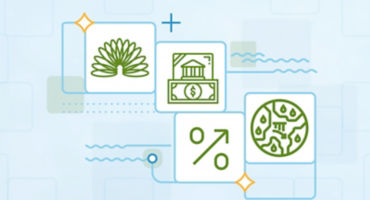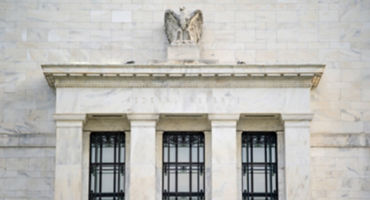3. The European high-yield market stands out for its higher quality profile, and we do not see a default cycle on the horizon.
In addition to being much larger than it was 10 – 20 years ago and offering investors a significantly wider opportunity set, today’s European high-yield market has seen a steady increase in quality. Currently, over two-thirds of the market, as measured by the ICE BofA Euro High Yield Constrained Index, is rated BB, and only approximately 6.5% is rated CCC and below2. When we combine the higher quality composition of the local market relative to past cycles with the fact that we aren’t seeing weakness in corporate fundamentals, we do not believe a full-scale default cycle is on the horizon. As a result, while there is the increased risk of a recession driven by tariff and geopolitical uncertainty, we think European default rates are likely to stay close to their long-term averages over the next 12 months. We’re also seeing the high-yield market be more disciplined than in the past — many deals that have come to market haven’t been funded in the high-yield market but have instead gone to other markets, such as private credit.
Where are the risks and opportunities in 2025?
While we believe the current environment continues to present attractive opportunities in European high yield, one of our overarching beliefs is that the high-yield market is highly inefficient at pricing default risk — implying the need for deep, fundamental research. In 2025 and beyond, we’re watching the following themes, which we think present active investors with both risks and opportunities.
Europe continues to face geopolitical and macro uncertainty…but not all issuers will be affected equally
The macro and geopolitical backdrop remains complex and uncertain. We think investors need to reposition for potentially greater dispersion across sectors and issuers, particularly in the context of the threats that US President Donald Trump’s planned tariffs (and any potential counter-tariffs) could pose. This is where we believe sector- and issuer-level analysis plays a key role. Against an uncertain macro backdrop, we believe understanding an issuer’s competitive position or whether they have a “moat” becomes increasingly important. In our view, the presence of a moat is a strong indicator of business quality and thus whether a company will be able to sustain margins and generate revenue – including through exogenous shocks, such as tariffs, that have the potential to impact companies with more complex global supply chains.
Another DeepSeek-level event could shake market conviction in AI…making it prudent to avoid sectors with increased capacity
AI is, of course, enabling an exciting new phase in the ongoing technological revolution, with potentially promising new applications across society. But predicting who will be the winners and losers of the AI boom is far from straightforward and there will inevitably be instances of misdirected capital. We’re wary about the significant levels of above-trend investment and capex and the resulting potential for a bubble to form given the enormous level of borrowing seen in the industry. As such, we remain doubtful about the prospects for high-yield companies with high exposure to the AI theme, for example, utility companies that are providing the underlying infrastructure required to expand AI capabilities. However, within technology more broadly, we see a number of opportunities in payment providers and software services companies with strong competitive advantages like the high expense of changing suppliers.
Market volatility could continue and spreads could widen further… giving high-yield investors the opportunity to potentially generate alpha from valuation opportunities
While high-yield bonds can continue to offer attractive coupon payments, the return to spread dispersion may become more permanent if volatility in fixed income markets persists. In our view, this may provide the potential for active investors to generate alpha from valuation opportunities. In this environment, we think it’s possible for active managers to add value over benchmark indices through bottom-up, fundamental credit selection.
How high-yield investors can benefit from volatility
We believe the environment for high-yield bonds will present attractive opportunities for investors over the next 12 months, with active managers potentially best positioned to benefit amidst a return to market and interest-rate volatility. We favour European over US high yield given its higher-quality bias. From a longer-term perspective, we view high-yield investments as continuing to play a crucial role in diversifying and enhancing bond portfolios.

























